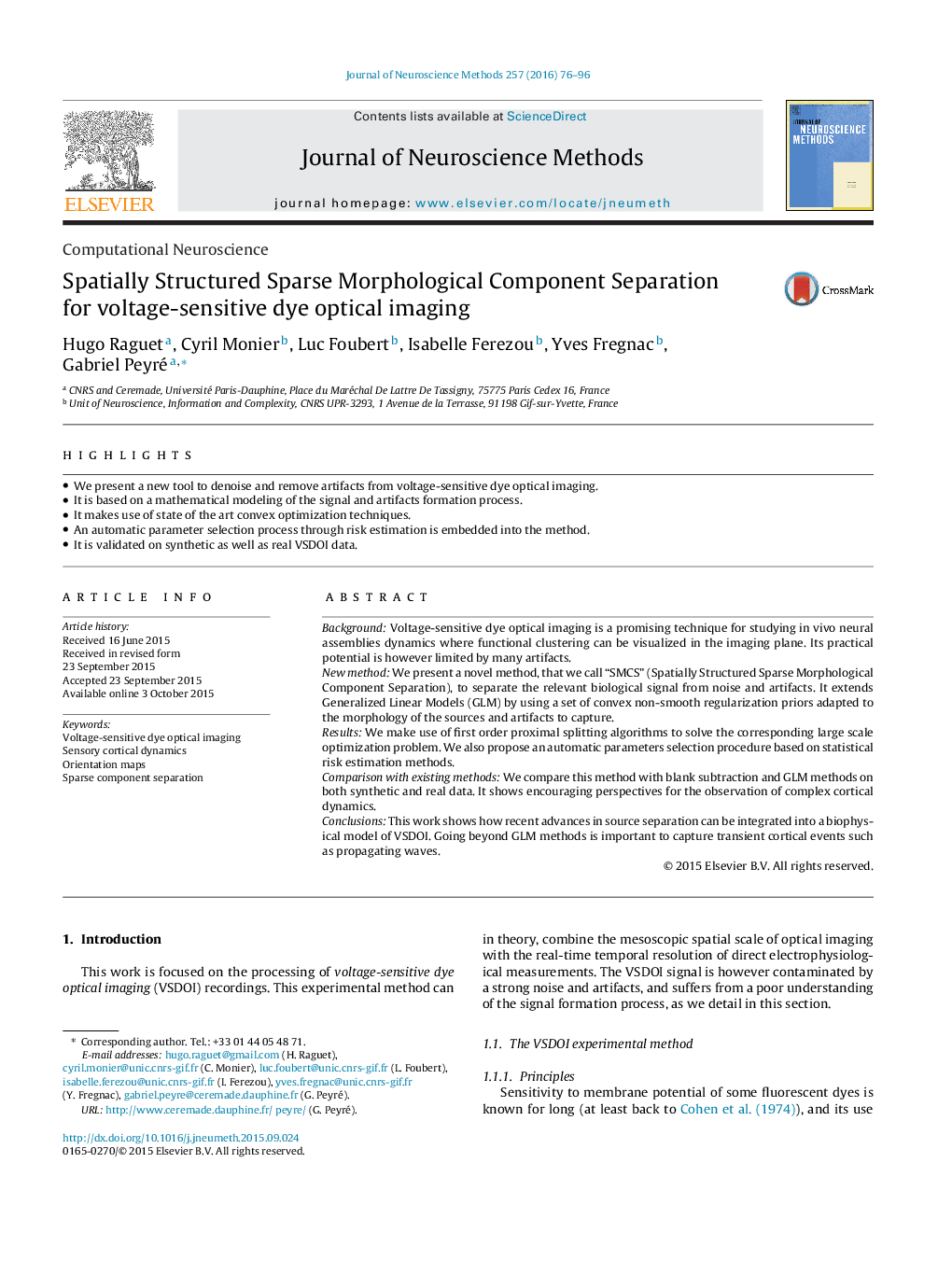| Article ID | Journal | Published Year | Pages | File Type |
|---|---|---|---|---|
| 6268086 | Journal of Neuroscience Methods | 2016 | 21 Pages |
â¢We present a new tool to denoise and remove artifacts from voltage-sensitive dye optical imaging.â¢It is based on a mathematical modeling of the signal and artifacts formation process.â¢It makes use of state of the art convex optimization techniques.â¢An automatic parameter selection process through risk estimation is embedded into the method.â¢It is validated on synthetic as well as real VSDOI data.
BackgroundVoltage-sensitive dye optical imaging is a promising technique for studying in vivo neural assemblies dynamics where functional clustering can be visualized in the imaging plane. Its practical potential is however limited by many artifacts.New methodWe present a novel method, that we call “SMCS” (Spatially Structured Sparse Morphological Component Separation), to separate the relevant biological signal from noise and artifacts. It extends Generalized Linear Models (GLM) by using a set of convex non-smooth regularization priors adapted to the morphology of the sources and artifacts to capture.ResultsWe make use of first order proximal splitting algorithms to solve the corresponding large scale optimization problem. We also propose an automatic parameters selection procedure based on statistical risk estimation methods.Comparison with existing methodsWe compare this method with blank subtraction and GLM methods on both synthetic and real data. It shows encouraging perspectives for the observation of complex cortical dynamics.ConclusionsThis work shows how recent advances in source separation can be integrated into a biophysical model of VSDOI. Going beyond GLM methods is important to capture transient cortical events such as propagating waves.
